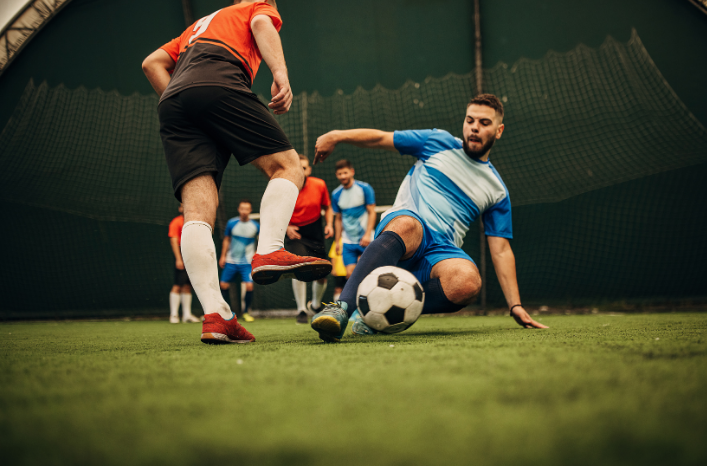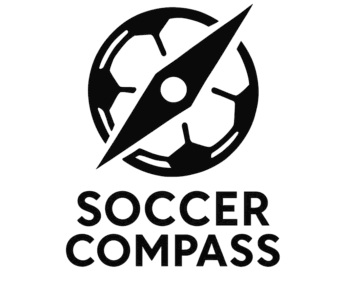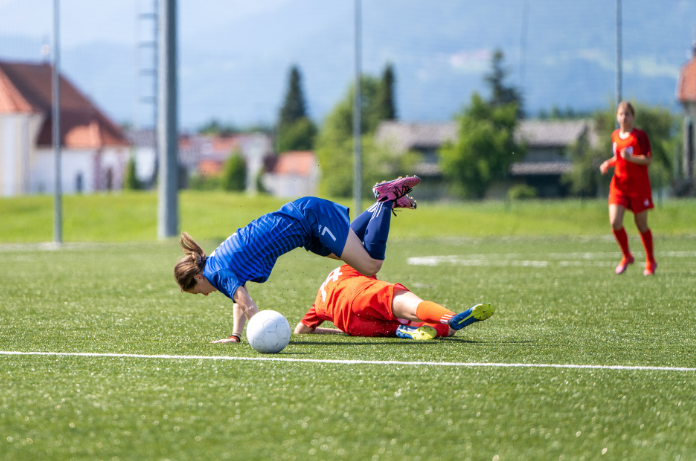The Complete Guide to Competitive Excellence
Want to dominate on the field while earning respect from coaches, teammates, and opponents? Mastering aggressive fair play in youth sports is the secret to channeling aggression into winning plays without crossing the line.

Every parent and coach faces a double-edged dilemma: some young athletes play too aggressively and rack up penalties, while others hold back and don’t compete hard enough. Sound familiar? Maybe you’ve watched your child or player hesitate on 50/50 balls, back down from physical challenges, or get pushed around by more aggressive opponents. Or perhaps you’re dealing with the opposite problem—an athlete who competes with intensity but crosses the line into dirty play. How do you teach aggressive fair play in youth sports—that perfect balance where kids compete ferociously for every ball without either playing timidly or earning red cards? The challenge isn’t just about winning games today. It’s about developing a playing style that combines fierce competitiveness with integrity, creating athletes who dominate through skill, determination, and mental toughness rather than either holding back or resorting to dirty tactics.
The truth is, the best youth athletes aren’t the ones who play dirty—they’re the ones who play smart aggressive. They compete with fire, determination, and relentless energy while staying within the rules. This isn’t just about avoiding red cards or ejections. It’s about building a playing style that will take young athletes to the next level.
What Does Aggressive Yet Fair Play Really Mean?
Let’s get this straight from the start: aggressive play is NOT about hurting opponents or bending the rules. Real aggression in youth sports means:
- Competing for every loose ball like your season depends on it
- Applying constant defensive pressure without fouling
- Being first to 50/50 balls through effort and anticipation
- Playing with mental toughness and physical intensity
- Never backing down from challenges while respecting boundaries
- Making opponents work for every inch of space
Think of it this way: aggressive players make their opponents uncomfortable through skill, speed, positioning, and determination—not through cheap shots or intimidation tactics.
Why Aggressive Fair Play Matters for Youth Development
Youth sports aren’t just about winning games this season. They’re about building character, skills, and habits that last a lifetime. When young athletes learn to play aggressively within the rules, they develop:
Mental toughness: Learning to compete hard without losing control builds resilience that translates beyond sports.
Respect from coaches: Every coach wants players who bring intensity and work ethic without creating discipline problems.
Better technical skills are developed when you can’t rely on fouls to stop opponents, you’re forced to improve your positioning, timing, and technique.
Leadership opportunities: Fair but aggressive players become team captains because they inspire others through their competitive spirit and integrity.
Long-term success: College scouts and elite programs look for players who compete hard but maintain composure under pressure.

The 7 Pillars of Aggressive Fair Play for Young Athletes
1. Master the Art of Anticipation Over Reaction
The difference between aggressive and reckless? Anticipation.
Great defensive players don’t react after opponents make moves—they read the game and position themselves to intercept passes, cut off angles, and arrive at contested balls first. This requires:
- Watching opponents’ body language and positioning
- Understanding common patterns in your sport
- Starting your movement a split-second earlier than competitors
- Staying on the balls of your feet, ready to explode in any direction
Practice drill: Have your athlete work on reading cues. In soccer, watch the attacker’s hips. In basketball, watch their eyes. Small details give away intentions before the action happens.
2. Channel Energy Into Legal Pressure
Aggressive doesn’t mean violent—it means relentless. Teach young athletes to:
- Close down space quickly without lunging
- Use their body positioning to force opponents into mistakes
- Apply constant pressure that makes opponents rush decisions
- Communicate loudly to coordinate defensive efforts
- Never give opponents a moment to breathe or think
Real-world example: The best youth defenders don’t slide tackle constantly—they stay on their feet, mirror attackers’ movements, and force bad touches through positioning alone.
3. Win the Mental Battle First
Physical aggression starts in the mind. Athletes who compete with controlled intensity understand that:
- Confidence isn’t arrogance—it’s preparation meeting opportunity
- Focus beats emotion every time
- The hardest workers in practice become the most aggressive in games
- Mental preparation before competition sets the tone
Mindset shift: Before games, have your athlete visualize winning 50/50 balls, making crucial defensive plays, and outworking opponents. Mental rehearsal translates to physical execution.
4. Develop Physical Strength and Speed Legally
Want to play more aggressively? Get stronger, faster, and more athletic. When youth athletes improve their physical capabilities, they can:
- Shield the ball better in possession
- Recover faster on defense
- Win aerial duels through timing and strength
- Accelerate past opponents cleanly
Training focus: Age-appropriate strength training, plyometrics, and speed work give young athletes the physical tools to compete aggressively without resorting to fouls.
5. Know the Rules Inside and Out
You can’t play on the edge if you don’t know where the line is. Elite aggressive players understand:
- Exactly what constitutes a foul in their sport
- How to use their body within legal limits
- What referees typically call versus what they let go
- The difference between incidental contact and intentional fouls
Coach’s tip: Review game footage with young athletes to analyze borderline plays. Understanding officiating helps them maximize aggression without crossing into illegal play.

6. Master Communication as an Aggressive Tool
Verbal intensity is underrated. Aggressive fair players use communication to:
- Direct teammates defensively (“I’ve got ball!”)
- Encourage maximum effort (“Keep pressing!”)
- Maintain focus during adversity (“Next play!”)
- Build team unity through vocal leadership
Notice what’s NOT on this list: trash talk, insults, or trying to get in opponents’ heads. That’s amateur hour. Real competitive communication focuses on your team, not tearing down others.
7. Control Your Emotions Under Pressure
This is where champions separate from pretenders. Aggressive fair play requires emotional intelligence:
- Accepting referee decisions without arguing
- Bouncing back from mistakes immediately
- Staying composed when opponents try to provoke you
- Channeling frustration into productive effort
Parent reminder: Your reaction to referees and opponents teaches your child more than any speech about sportsmanship. Model the behavior you want to see.
Practical Techniques to Build Aggressive Fair Play in Youth Sports
For Soccer Players:
- Tackle through the ball, not the player: Time your challenges to win possession cleanly
- Use your shoulder legally: Shield and battle for position without pushing
- Press intelligently: Force opponents backward without lunging out of position
- Stay on your feet: Sliding should be your last resort, not your first move
Basketball Players:
- Aggressive help defense: Rotate quickly without reaching and fouling
- Box out with intensity: Use leverage and positioning to dominate the glass
- Pressure the ball handler: Get in their space without hand-checking
- Attack the basket strong: Draw fouls through contact, don’t create them artificially
For Football Players:
- Finish every play: Sprint through the whistle, never coast
- Use proper technique: Aggressive blocking and tackling within the rules
- Play with controlled violence: Maximum effort within legal boundaries
- Study film relentlessly: Knowledge makes you more aggressive because you know what’s coming
All Sports:
- Sprint to every loose ball like it’s game point
- Communicate constantly to elevate team intensity
- Recover immediately after being beaten—never give up on plays
- Outwork everyone in practice so game intensity feels natural
Red Flags: When Aggression Crosses the Line
Parents and coaches need to watch for warning signs that aggression has become problematic:
- Frequent technical fouls, yellow cards, or ejections
- Retaliation after being beaten on plays
- Deliberately trying to injure opponents
- Arguing constantly with referees
- Celebrating opponents’ injuries or misfortune
- Bullying teammates who don’t match their intensity
If you see these behaviors, it’s time for a serious conversation about values and priorities.
Building a Culture of Aggressive Fair Play in Youth Sports
For coaches and parents working with youth teams:
Set clear expectations early: Define what aggressive fair play looks like for your team. Make it part of your team culture from day one.
Recognize and reward it: When players battle for loose balls, apply great defensive pressure, or show mental toughness, acknowledge it publicly. What gets praised gets repeated.
Address violations immediately: If a player crosses the line, address it right away. Quick correction prevents bad habits from forming.
Model it yourself: Coaches and parents must demonstrate respect for officials, opponents, and the game. Kids mirror the adults in their lives.
Emphasize effort over outcome: Praise the aggressive pursuit of excellence, not just winning. This builds internal motivation to compete hard in all situations.

The Long-Term Payoff: Why This Matters Beyond Youth Sports
Teaching young athletes to play aggressively within boundaries creates adults who:
- Compete ethically in business and careers
- Stand up for themselves without bullying others
- Work harder than their competition while playing by the rules
- Lead through example rather than intimidation
- Handle adversity with grace and determination
These lessons transcend sports. They create better humans.
Your Action Plan: Starting Today
Ready to help your young athlete develop aggressive fair play? Here’s your immediate action plan:
Week 1: Have an honest conversation about what aggressive fair play means. Use examples from professional athletes they admire.
During Week 2: Identify one specific area to improve (anticipation, physical strength, emotional control, etc.)
Week 3: Implement specific drills and training focused on that area
In Week 4: Review game footage together, analyzing moments of aggressive fair play versus crossing the line
Ongoing: Make it a continuous conversation. After every game, discuss moments where they competed hard within the rules and moments where they could have adjusted their approach.
Final Whistle: The Choice Is Theirs
Every young athlete faces a choice: will they be remembered as a player who competed with honor and intensity, or someone who took shortcuts and played dirty?
The best news? Aggressive fair players win more often. Because they stay on the field instead of sitting in the penalty box and earn respect instead of creating enemies. And they develop skills instead of relying on intimidation.
Most importantly, they love the game more because they’re competing the right way—with everything they’ve got, within the boundaries that make sports meaningful.
Your young athlete can be that player. Start building aggressive fair play today, and watch them transform into a competitor everyone respects and nobody wants to face.
Ready to Take Your Young Athlete to the Next Level?
Developing aggressive fair play is just one piece of building a complete athlete. We help parents and coaches raise competitors who play hard and play right. Keep learning?
Have questions about developing aggressive fair play? Drop us a line and let’s build a community committed to raising athletes who dominate the right way.

